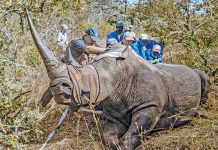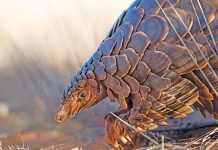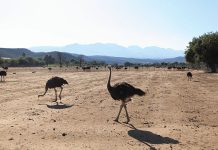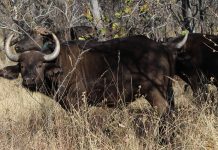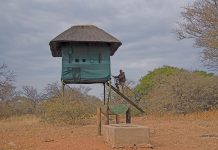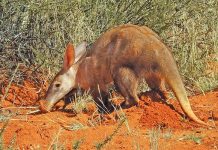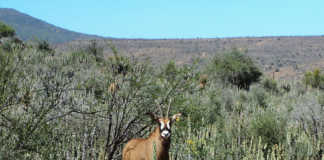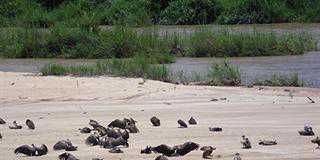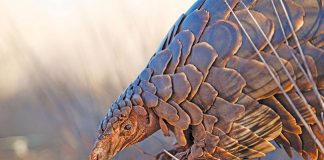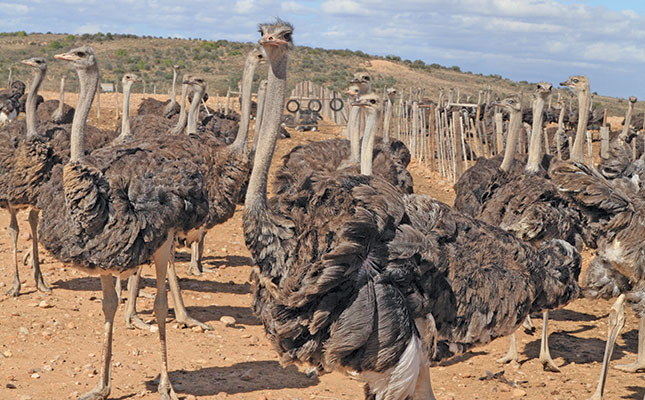
Photo: FW Archive
Why was the Ostrich Production Standard developed?
The industry had a good Code of Practice, which focused primarily on production management standards. By 2018, however, concerns were being raised that the code wasn’t sufficiently detailed or formalised. Luxury goods company Hermès, the biggest international buyer of high-quality ostrich leather, worked with Klein Karoo International to drive the development of an ostrich standard, and this was officially launched in 2021.
(Klein Karoo International merged with Mosstrich to become Cape Karoo International in 2019.)
What makes the Ostrich Production Standard different from the Code of Practice?
The code was developed by the industry for the industry, whereas the standard touches on every aspect of the ostrich production cycle. The industry consulted with Exotic Assurance, an Australian company that assisted with the development of the Australian shipping standard for livestock, while developing the draft document of the standard.
Each point
of the draft document was discussed from beginning to end by a committee consisting of producers, buyers, ostrich scientists, researchers and technical experts, animal welfare and environmental management experts, experts in the writing of standards and assessing conformity, regulators, and non-governmental organisations.
Everyone on the committee had the opportunity to raise concerns, present proposals and argue their opinion. The document was then adapted to reflect the consensus opinion.
What would you say is at the heart of the Ostrich Production Standard?
The standard is built on the five animal freedoms regarded internationally as the gold standard of animal welfare. According to these, animals should be free of hunger and thirst; discomfort; pain, injury or disease; and fear and distress. They should also be free to express their normal behaviour.
In the case of the Ostrich Production Standard, these freedoms are measured against scientific, animal-centred factors such as health and signs of stress, and not subjective perception of what or how the birds might ‘feel’ about something. Resource-based parameters are quick, easy and reliable, but good management and resources don’t always result in good animal welfare.
What were some of the contentious issues?
When we started working on the standard, buyers were after fixed criteria, which were not always practical. For example, they wanted water troughs that could accommodate 50 ostriches at a time, even though the birds don’t all drink water simultaneously.
They also wanted designated dust baths, despite some camps having large areas suitable for dust baths, which the birds can use at their leisure.
Buyers, in turn, had to get used to the idea that some farmers protect their birds from predators by keeping them in secure camps at night at a high stocking density.
Was there anything interesting that you learnt from the experience?
The rule during the negotiations was that everything had to be backed by science and research. For example, in the absence of scientific proof that ostriches didn’t experience stress in a particular situation, research had to be done to fill this gap, or the wording of this point had to be changed to reflect this reality and ways to alleviate this stress.
How does certification work?
The Ostrich Production Standard includes requirements based on current scientific knowledge and suitable husbandry practices developed over many years. It also includes the principle of continual improvement, recognising that techniques used to assess animal welfare are constantly developing and being improved. Future editions will therefore take new research and experience into account.
The certification process is not a box-ticking exercise; producers are given flexibility to choose how to conform to the standard. The standard may also be used in conjunction with more specific requirements prescribed by regulators or supply chains.
Who carries out the audits?
To add credibility, we issued a tender to help us identify an independent company to audit the production facilities against the standard. NSF, one of three applicants that had an international footprint, won the tender. Their qualified auditors also demonstrated appropriate applied agricultural expertise and experience.
Following an audit, NSF informs the South African Ostrich Business Chamber (SAOBC) whether a producer has passed the audit or whether there are findings that need to be improved to enable certification.
How often are the audits carried out?
We agreed that this shouldn’t be turned into an annual exercise, and that producers should rather be given the opportunity to prove themselves. Once they had done this, they would need to be audited only every second year. On the other hand, those who failed to comply would be audited every six months until they complied. Abattoirs, unfortunately, need to be audited annually due to the nature of their business.
What are the costs involved?
Hermès paid the consultants during the development of the Ostrich Production Standard and partially contributed to the certification costs of farmers during the first year. Yvette Lötter of the SAOBC helps farmers prepare their paperwork, performs a desktop audit, and only then lines up audits. Farmers have been carrying the cost themselves as from this year.
How many farms were involved in the first audit?
We aimed to get a third of our farms audited in the first year and another third by the second year, but Lötter managed to get 85% of the 343 farms on our books audited in the first year. This represents 95% of all the ostriches slaughtered in the 2021/22 season.
Do farmers recognise the value of the standard?
Some might feel that it’s a useless exercise, as compliance doesn’t yield any premiums or rewards. The truth, however, is that consumers are becoming increasingly aware of animal welfare and environmentally responsible production, so failure to comply could result in lost markets. We want to contribute actively and be leaders in well-being and environmental protection.
That said, there wasn’t resistance to the standard, as many ostrich farmers already understood the [principles of the process] from the old code launched in 2012. Their exposure to a strict regulatory environment on traceability, food safety and health status was a stepping stone to animal welfare and well-being compliance.
Is it as intense as a GlobalGAP audit?
No, we wanted to create an environment that enables farmers to comply with the least administrative effort. The SAOBC supports farmers through training, and Lötter, for example, prepares producers well in advance to ensure they are ready for an audit.
The farmers carry out an internal audit and submit their paperwork to Lötter, who then does a desktop audit during which she identifies gaps or issues that need to be addressed. She might, for example, advise farmers to elaborate more on certain points or obtain additional documentation as proof of assertations.
While the audit does require a lot of administration, this isn’t new to our farmers, as it builds on the practices required while we still used the Code of Practice and is a vital part of record-keeping. The trick is to get the administration in order and keep it up to date from then on.
We’ve found that most ostrich farmers follow sound welfare practices and environmentally responsible production methods. Those not complying initially usually fail because of poor paperwork or documentation, which is soon corrected.
Email Dr Adriaan Olivier at [email protected].

